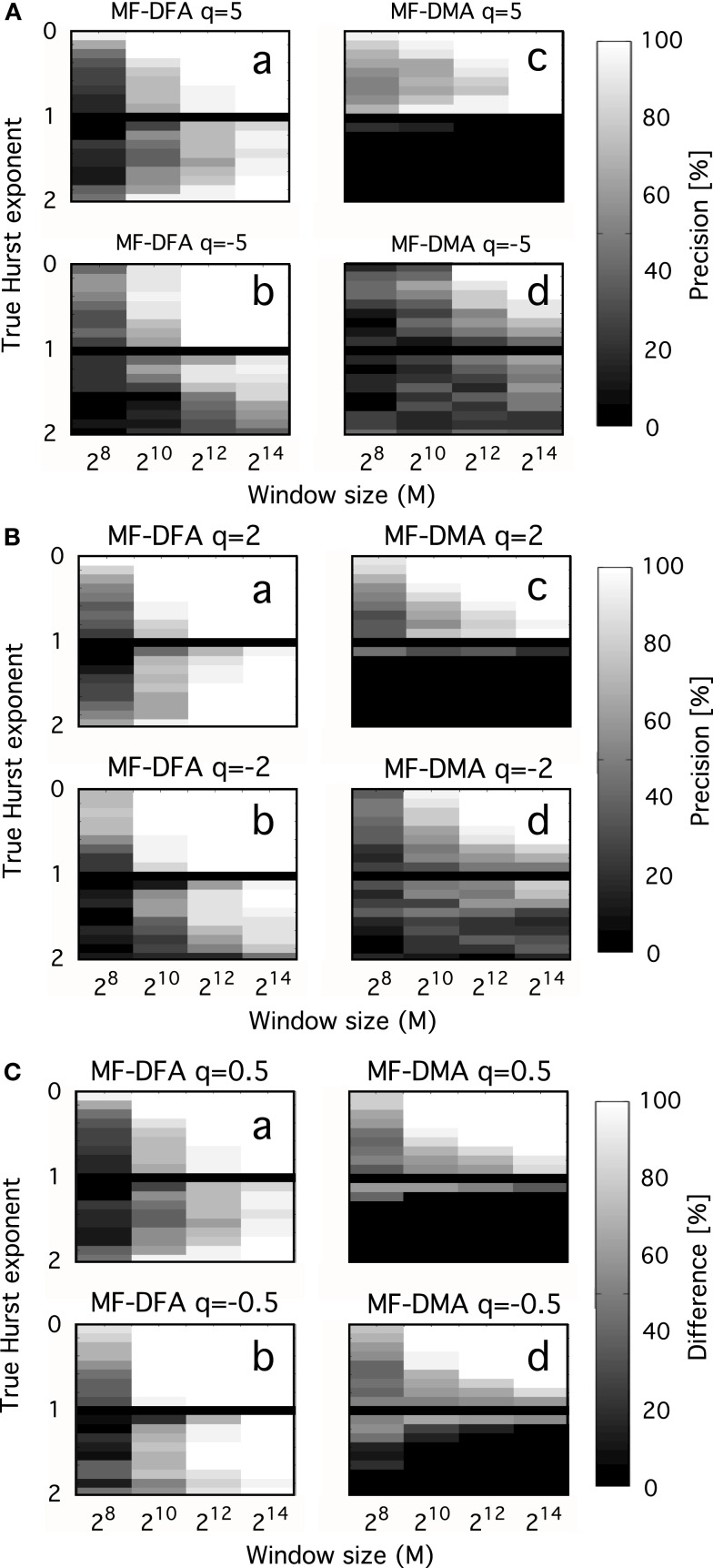Figure 6.
Precision as a function of moment order, signal length, and Hurst exponent. Precision of MF-DFA [left side of (A–C)] and MF-DMA [right side of (A–C)] as a function of q, Htrue, N. fGn and fBm signals were generated by DHM with length of 28, 210, 212, 214, and Htrue increased from 0.1 to 1.9 in steps of 0.1, skipping Htrue = 1 (corresponding to 1/f boundary seen as the black horizontal line in the middle). Estimation of the generalized Hurst exponent should not depend on q, as monofractal’s H(q) is a theoretically constant function scattering around Htrue across different order of moments. The intensity-coded precision index is proportional to the number of estimates of H falling into the range of Htrue ± 0.1, with lighter areas indicating more precise estimation. Calculation of this measure is based on 20 realizations for each q, Htrue, N. (A) Performance of methods for q = ± 5. (B) Performance of methods for q = ± 2. (C) Performance of methods for q = ± 0.5. Besides the clear dependence of precision on Htrue and N, influence of moment order is also evident, given that the lightest areas corresponding to the most reliable estimates tend to increase in parallel with moment order approaching 0 [Note the trend from (A–C)]. The lower half of the plots indicates that MF-DFA is applicable for signals of both types, while MF-DMA is reliable only on fGn signals. This result is further supported by the paper of Gao et al. (2006), who demonstrated a saturation of DMA at 1 for H when the true extended Hurst exponent exceeds 1 (thus it is non-stationary)

